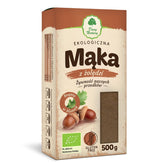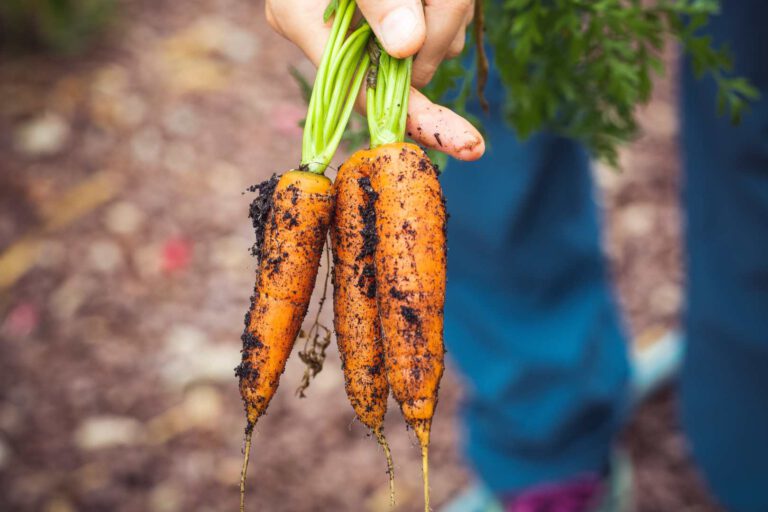What should an environmentally friendly diet look like?
Contents:
- Why do current food production methods have a negative impact on the environment?
- An environmentally friendly diet
Scientists who are part of the EAT ( Lancet Commission on Food, Planet, Health ) have developed a "Planetary Diet" ( Planetary Health Diet) out of concern for the well-being of our planet, the environment, and ourselves. In today's world, with consumerism at its highest levels in human history, more food is produced and more food is wasted every day in highly developed societies than ever before, while 2 billion people in the world suffer from hunger and extreme malnutrition. Another 2 billion people are obese.
Research by PROM (Programme for Rationalization and Reduction of Food Waste) shows that we won't be able to halve this amount by 2030, when we're wasting nearly 5 million tons of food annually (in line with the United Nations' targets). Estimates suggest that if the current animal production system doesn't change, demand for meat could increase by as much as 80% in a few years, in line with population growth. All of this data shows how inefficient our food system has become and that the moment has come when we must drastically change our current eating habits if we care about our health, our planet, and future generations. How does the current food production model threaten our planet?
Why do current food production methods have a negative impact on the environment?
Livestock farming is one of the most significant factors influencing climate change. It is responsible for the emission of 7 gigatons of carbon dioxide equivalents per year. This is more than the total emissions of all traffic. Livestock farming is also responsible for the emission of methane – a gas that has a 26 times greater impact on global warming than CO2 or nitrogen oxides, but not only that. CO2 emissions are directly linked to the farming itself, but also to:
- Deforestation of land for feed production
- energy-intensive production of fertilizers and pesticides needed for the production of animal feed,
- Use of agricultural machinery,
- field irrigation,
- room heating,
- Disposal of animal carcasses,
- Packaging (mostly made of plastic),
- Storage and distribution of products,
- Transport of animals, often over long distances.
Agriculture also contributes to soil and surrounding surface water pollution. It produces vast amounts of animal excrement—a single farm can produce about as much excrement as a city with 50,000 inhabitants. In addition to feces, agricultural wastewater also contains environmentally hazardous substances used in the production process:
- nitrogen compounds,
- Disinfectants, detergents and deodorizers,
- Antibiotics,
- Bacteria, viruses and parasites,
- Ammonia,
- Formaldehyde,
- hydrogen peroxide,
- Chromates.
On the other hand, fish farms cause water pollution through antibiotics and pesticides. Animal excrement accumulates around the farm, contaminating surrounding fields. Pollutants can even reach distant rivers and oceans. But that's not all—pollution is also influenced by biological production waste and the final product itself, i.e., meat. Every year, humans discard the equivalent of 12 billion farm animals. Furthermore, animal farming also causes land and water pollution through fodder production, which requires intensive use of fertilizers and pesticides.
Meat production occupies approximately 70% of agricultural land. The burning and clearing of forests for feed production, as well as for the farms themselves, including roads, buildings, and utility lines, causes enormous ecological damage. Providing land for livestock grazing and feed production is the main reason for deforestation of the Amazon rainforest. This contributes, among other things, to:
- global warming,
- Extinction of wild animal species,
- Degradation of entire ecosystems (forests, meadows, wetlands),
- The Earth's ability to absorb CO2 is decreasing.
The expansion of factory farming and monoculture feed production, artificial fertilization, and the use of pesticides lead to the disappearance of microorganisms, soil degradation, and desertification. Factory farming also contributes to the extinction of wild plant and animal species by destroying their natural ecosystems.
Wild animals are becoming extinct because forests are being cleared and burned to grow food crops, fish are being caught on an industrial scale, and their natural environment is being poisoned. Due to the reduction in the area of natural ecosystems, the number of wild animals is systematically declining year after year. Wild animals currently account for only 4% of the total biomass, while domestic mammals account for 60%. The remaining 36% is made up of humans.
An environmentally friendly diet
Planetary scientists, the Health Diet , came to the unequivocal conclusion that only a radical reduction in red meat consumption in Western civilizations can have a positive impact on both our health and the natural environment. This doesn't mean completely abstaining from meat and other animal products, but rather eating red meat about once a week, fish twice a week, and a glass of milk, a piece of butter , cheese, or other dairy products— even every day .
In return, we should consume much more, by up to 50%, fruit and vegetables, especially pulses , seeds and nuts , and, as in the case of red meat, reduce sugar consumption by at least half. Such a diet would not only be environmentally friendly, but would also significantly contribute to reducing the risk of lifestyle diseases: circulatory, heart and diabetes. Another important factor must not be forgotten - not wasting food, which is also becoming increasingly popular thanks to the zero-waste and less-waste movements. To change the way we think about food, we need changes on a global level, both social, economic and political.
As a society, we must be aware that any commercial, industrial animal farming contributes on a large scale to the degradation of our planet and entire ecosystems. The solution could be a decisive reduction in the consumption of animal products, as well as the use of meat from small and controlled farms, where the animals are raised in a multi-species ecosystem that includes forest areas, and where any waste generated by the natural environment can be absorbed and neutralized.
THE PUBLISHER'S CHOICE
Dried plums 1 kg BIOGO
- €7,01
- €7,01
- Unit price
- / per
Dried White Mulberries 500 g ORGANIC
- €5,84
- €5,84
- Unit price
- / per
Almonds 1 kg BIOGO
- €11,69
- €11,69
- Unit price
- / per
Cranberries sweetened with apple juice organic 1 kg BIOGO
- €16,37
- €16,37
- Unit price
- / per
Dried dates 1 kg BIOGO
- €4,21
- €4,21
- Unit price
- / per
Unpeeled buckwheat groats 1 kg BIOGO
- €2,81
- €2,81
- Unit price
- / per
Walnuts 800 g BIOGO
- €8,65
- €8,65
- Unit price
- / per
Peeled sunflower seeds 1 kg BIOGO
- €3,04
- €3,04
- Unit price
- / per
PULLED ORGANIC SUNFLOWER SEEDS 1 KG BIOGO
- €4,44
- €4,44
- Unit price
- / per












































































































































